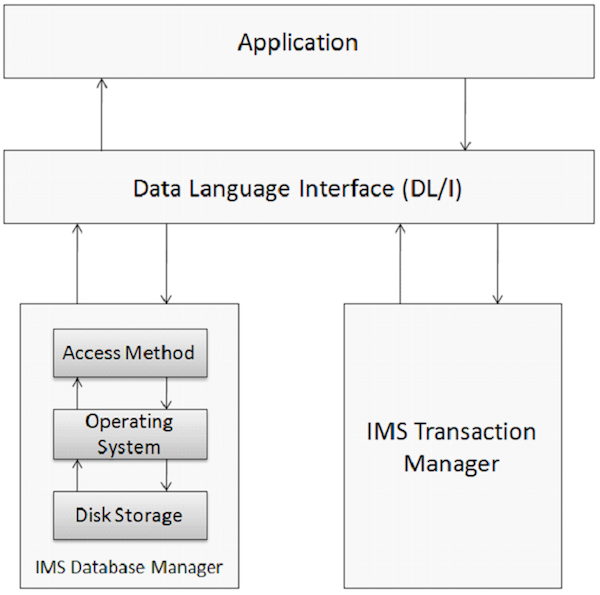
- IMS DB Basics Tutorial
- IMS DB - Home
- IMS DB - Overview
- IMS DB - Structure
- IMS DB - DL/I Terminology
- IMS DB - DL/I Processing
- IMS DB - Control Blocks
- IMS DB - Programming
- IMS DB - Cobol Basics
- IMS DB - DL/I Functions
- IMS DB - PCB Mask
- IMS DB - SSA
- IMS DB - Data Retrieval
- IMS DB - Data Manipulation
- IMS DB - Secondary Indexing
- IMS DB - Logical Database
- IMS DB - Recovery
- IMS DB Useful Resources
- IMS DB - Questions And Answers
- IMS DB - Quick Guide
- IMS DB - Useful Resources
IMS DB - Overview
A Brief Overview
Database is a collection of correlated data items. These data items are organized and stored in a manner to provide fast and easy access. IMS database is a hierarchical database where data is stored at different levels and each entity is dependent on higher level entities. The physical elements on an application system that use IMS are shown in the following figure.

Database Management
A Database Management system is a set of application programs used for storing, accessing, and managing data in the database. IMS database management system maintains integrity and allows fast recovery of data by organizing it in such a way that it is easy to retrieve. IMS maintains a large amount of world's corporate data with the help of its database management system.
Transaction Manager
The function of transaction manager is to provide a communication platform between the database and the application programs. IMS acts as a transaction manager. A transaction manager deals with the end-user to store and retrieve data from the database. IMS can use IMS DB or DB2 as its back-end database to store the data.
DL/I – Data Language Interface
DL/I comprises of application programs that grant access to the data stored in the database. IMS DB uses DL/I which serves as the interface language that programmers use for accessing the database in an application program. We will discuss this in more detail in the upcoming chapters.
Characteristics of IMS
Points to note −
- IMS supports applications from different languages such as Java and XML.
- IMS applications and data can be accessed over any platform.
- IMS DB processing is very fast as compared to DB2.
Limitations of IMS
Points to note −
- Implementation of IMS DB is very complex.
- IMS predefined tree structure reduces flexibility.
- IMS DB is difficult to manage.